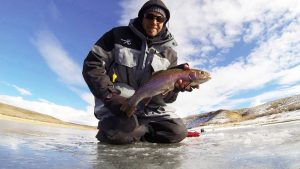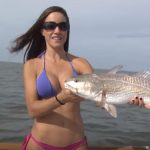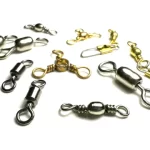Ice fishing offers a thrilling winter experience for anglers, but knowing where to fish on a frozen lake can be the difference between a productive day and a long wait with no bites. While fish behavior changes with dropping temperatures, understanding their winter habits can guide you to the best spots. Below are key locations on a lake to target when ice fishing.

1. Near Underwater Structures
Fish tend to congregate around structures that provide shelter and food. Some of the best spots to drill your holes include:
- Drop-offs: These sudden depth changes attract species like walleye and perch. Fish use these areas to transition between shallow and deep water.
- Weed beds: Even in winter, weed beds provide cover and attract baitfish. Look for green, healthy vegetation under the ice.
- Rock piles and submerged logs: These areas offer hiding spots for fish like bass and pike.
Tip: Use a sonar device to pinpoint underwater structures before drilling holes.
2. Focus on Depth Changes
Fish often move to different depths throughout the day. Generally, you’ll find:
- Shallow flats: Early in the morning and late in the afternoon, fish often feed in shallow areas.
- Deep basins: As the day progresses, many species retreat to deeper waters where the temperature remains stable.
Tip: Start in shallower waters and gradually move to deeper spots if the action slows down.
3. Target Points and Humps
Points are areas where the shoreline juts out into the lake, creating natural ambush spots for predatory fish. Humps are underwater rises that also attract fish by offering a feeding zone.
- Fish species: Pike, walleye, and perch are often found around these areas.
- Best technique: Jigging with live bait or brightly colored lures works well in these locations.
Tip: Use a GPS or lake map to identify points and humps before venturing onto the ice.
4. Follow the Fish During the Day
Fish movement varies depending on the time of day and conditions:
- Morning and evening: Fish are more active during low-light conditions and can be found in shallower waters.
- Midday: Many species move to deeper water or areas with more cover.
Tip: Don’t be afraid to move frequently. If you’re not getting bites after 20-30 minutes, try a new spot.
5. Use Electronics to Your Advantage
Modern ice fishing gear can greatly increase your chances of success. Consider using:
- Fish finders: These devices can show the depth and presence of fish beneath the ice.
- Underwater cameras: Great for identifying the type of fish in the area and their behavior.
Tip: Always check the thickness of the ice before drilling, ensuring safety first.
Ice fishing on a lake can be incredibly rewarding, especially when you know where to look. By targeting underwater structures, depth changes, and natural ambush points, you’ll increase your chances of landing fish. Equipped with the right knowledge and tools, any angler can turn a cold day on the ice into a successful fishing adventure.
Image: visitutah





